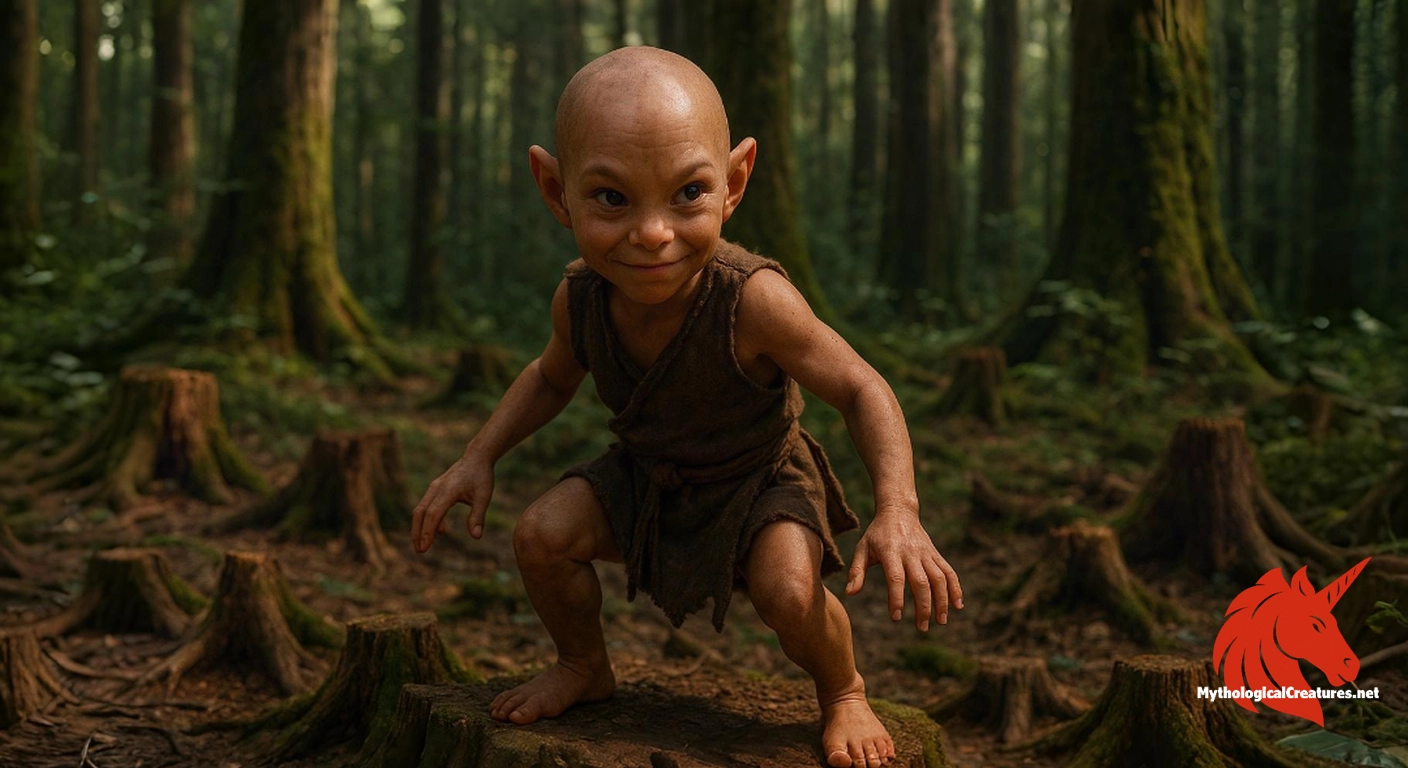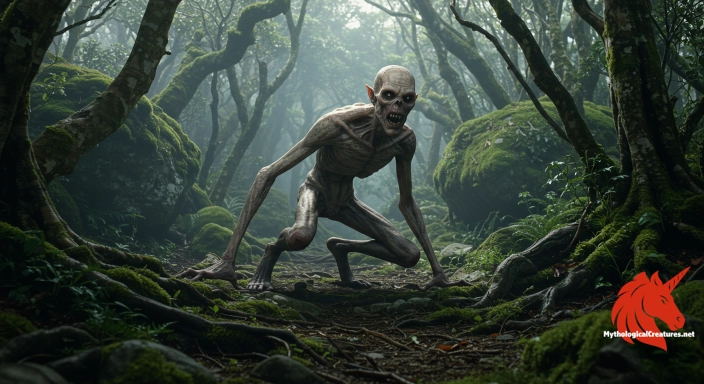Yehasuri: The Yehasuri are two feet tall wild little people from Catawba legend who inhabit the woodlands of South Carolina's Catawba Indian Reservation.

Yehasuri
Yehasuri - They serve as cautionary figures in Catawba folklore, embodying the unpredictable interplay between human society and nature.
Origins & First Encounters
The Yehasuri are enigmatic beings rooted in ancient Catawba legend, intriguing both for their diminutive size and their whimsical mischief. Standing at a mere two feet tall, these wild little people have been embedded in the cultural tapestry of the Catawba since time immemorial. Their origins are shrouded in myth, emerging from the deep, intertwined connections with the natural world that have always characterise indigenous traditions. Early attestations suggest that their story was interwoven with everyday life on the Catawba Indian Reservation in South Carolina, with elders recounting tales that blend caution and charm. The narrative of the Yehasuri reflects a keen awareness of nature’s hidden realms, where even the smallest creatures hold unexpected powers. Despite their ordinary human-like appearance, they are celebrated and feared for the unpredictable energy they bring. Their depiction as both playful and potentially vicious encapsulates the complex moral fabric of a people deeply connected to their natural environment. Tales of their mischief and secretive habits have been passed down through generations, enriching the Catawba's legacy. In these narratives, the Yehasuri stand as symbols of nature’s capricious spirit and the delicate balance between human order and wilderness chaos. Today, they continue to be a cherished, if mischievous, part of Catawba cultural identity.
Source Texts & Tale Variants
The primary evidence for the Yehasuri comes from the rich oral tradition of the Catawba people, where stories of these little tricksters have been preserved for centuries. Early storytellers recounted detailed accounts of their behaviours and habitat, embedding the creature within the mystical landscape of South Carolina. Although written records are scarce, the recurring motifs of their lifestyle and the rituals associated with them have helped maintain a coherent narrative. Various versions of these stories exist, each adapting the tale to fit the specific context of local experience and communal memory. In some accounts, their spirit is seen as an embodiment of the wild, a guardian of secret natural spaces, while in others they assume a more cautionary role. Ritual practices, such as the use of tobacco and the recitation of a sacred prayer, are consistently cited across the variants, underscoring their importance in traditional rituals. Accounts differ slightly in how they describe the balance between their playful antics and their capacity for malice. As these stories took shape over time, each retelling added a layer of complexity that speaks to the dynamic nature of oral history. The persistence of these diverse narratives highlights the enduring influence of the Yehasuri in Catawba folklore.
Form & Powers
The Yehasuri are typically depicted as small, albeit surprisingly resilient, beings with a distinctly human appearance despite their diminutive stature. Their height, measured at around two feet, makes them appear almost as miniature reflections of the larger world they inhabit. Artistic depictions often show them with slender, agile limbs, designed to move with stealth and agility through dense woodlands. Their facial features are described as ordinary, yet subtle expressions betray an intelligence and a knowing mischief. The natural palette of their skin tones, often earthy and muted, helps them blend seamlessly into their forest surroundings. Some depictions hint at features such as keen, bright eyes or hair that seems to bear the texture of windswept foliage. Their clothing, if any is observed, is thought to be crafted from natural materials like leaves and scraps of bark, further emphasising their deep connection to nature. Even slight variations in their described appearance suggest that local storytellers adapted their image to the immediate environments in which they were encountered. Each physical detail contributes to the impression of the Yehasuri as both part of and apart from the everyday human experience.
Regional Faces
The legend of the Yehasuri is deeply rooted in the Catawba traditions of South Carolina, yet echoes of similar creatures appear across neighbouring indigenous cultures. In some local retellings, these beings are portrayed with subtle differences such as varied attire or slightly altered physical traits that mirror the specific flora and fauna of their region. In areas where lush woodlands and ancient trees dominate, the Yehasuri are often shown to be even more intimately connected with nature, residing in tree stumps and natural hollows that are unique to that locality. Variations in the creature’s temperament are also notable; while some tales emphasise their playful trickery, others caution that their misdeeds can veer into dangerous territory. The ritualistic elements used to ward off these beings, particularly the use of tobacco and the recitation of an ancestral prayer, may also differ slightly from one community to another. In certain retellings, their role shifts from that of mere tricksters to guardians of hidden knowledge and forest lore. These regional adaptations not only highlight the diversity of local belief systems but also illustrate the ways in which geography and environment can shape myth. The subtle regional nuances serve to reinforce the idea that the Yehasuri, while universally small, are as varied as the landscapes they inhabit.
Cultural Parallels
When examining the myth of the Yehasuri alongside other cultural legends, one finds striking similarities with diminutive beings that recur in folklore around the world. Their portrayal as small, cunning figures mirrors that of European pixies and Irish leprechauns, all of whom weave between the realms of benign trickery and cautionary mystique. Much like the Yehasuri, these other small folk are often depicted as both helpful and hazardous, providing gifts or causing misfortune in equal measure. These creatures frequently act as liminal figures, straddling the boundary between the lush world of nature and the structured realm of human society. The ritual of using tobacco and sacred incantations to repel these beings echoes similar practices used in disparate cultures as a form of spiritual protection. Cross-cultural comparisons reveal that the attributes of mischief and elusiveness are not random but serve to symbolise the unpredictable forces of nature. In every tradition, the small stature of these beings underlines a broader theme: that even the tiniest forces in the natural world can wield significant influence over human fortunes. The Yehasuri, therefore, fit neatly into a global mosaic of mythological creatures that remind us of nature's hidden dimensions and the eternal allure of the mysterious. Their story enriches our understanding of how diverse cultures utilise folklore to symbolise the interplay between the seen and unseen.
Legacy & Modern Evolution
Over time, the depiction of the Yehasuri has evolved from a localized piece of oral tradition into a broader symbol of nature’s enduring mystique. The initial narratives, deeply embedded in the day-to-day life of the Catawba, have gradually been reinterpreted in modern contexts that value both cultural heritage and ecological awareness. Contemporary artists and writers have embraced the image of these wild little people, often portraying them as whimsical guardians of an endangered natural world. The rituals associated with them, such as the use of tobacco and a distinct prayer to tame their mischief, have taken on new layers of symbolism in modern retellings. As scholarly interest in indigenous stories has grown, the Yehasuri have come to represent the delicate balance between tradition and the inevitable march of modernity. Their transformation in popular media and literature reflects a broader shift towards recognising and preserving the wisdom embedded in ancient mythologies. Today, the legacy of the Yehasuri is celebrated not only in folklore but also in artistic expressions, cultural festivals, and academic studies that seek to understand the depth of native traditions. This modern reinterpretation underscores a timeless truth: that even the smallest beings in our mythic landscape can carry profound messages about the natural and spiritual world. Thus, the Yehasuri remain an enduring emblem of the power of native lore, bridging past and present through a rich tapestry of cultural memory.
Interesting Fact
An intriguing aspect of the Yehasuri is that, despite their diminutive size and unassuming appearance, they have maintained a strong cultural presence as embodiments of both mischief and caution within Catawba legend.
Quick Creature Info
Origin:
Features:
Our Mythic Legendary Rating:

Also Sometimes Known As:
Habitat:
Supernatural Powers:
Physical Attributes:
Abilities:
Behavior:
Weaknesses:
Lore:
Related Creatures, Tales or Lore
- PPukwudgie
- MMannegishi
- CChaneque
References
Discover Another Mythical Legend You May Not Have Heard Of?
Uncover the mysteries of ancient folklore and expand your knowledge of legendary beings from cultures around the world.
Dare to Meet the Wekufe....
Curated by the Mythological Creatures Team (rev. May 2025)
